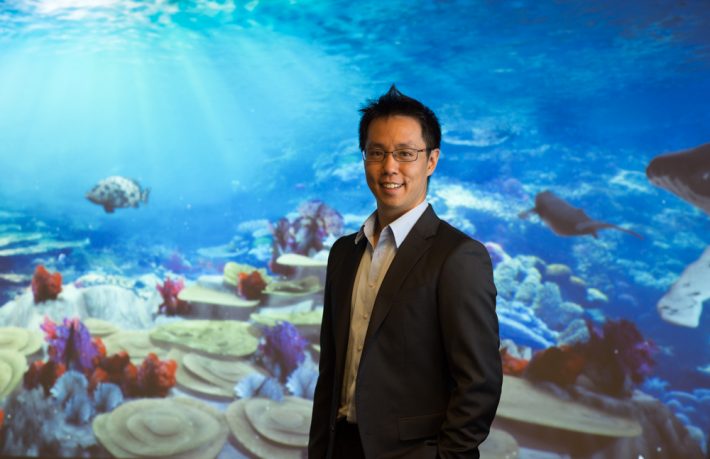Study finds ways to avoid hidden dangers of accumulated stresses on seagrass
Queensland University of Technology press release
A new study led by Queensland University of Technology (QUT), has found ways to detect hidden dangers of repeated stresses on seagrass using statistical modelling.

The research, published by the Journal of Applied Ecology, found cumulative maintenance dredging which affected the light on the sea floor increased risks on seagrass survival.
It found, globally, seagrass meadows can be at risk of collapse from accumulated effects of repeated dredging and natural stress.
However, lead researcher QUT’s Dr Paul Wu said maintenance dredging programs of one or two weeks (common in Queensland) were unlikely to impact seagrass.
- Seagrass provide shelter and food to marine life, including at-risk species like dugongs and green turtles
- Globally, hundreds of millions of cubic metres of sediment are dredged annually
- Dredging repeated every 1, 2 or 3 years, or for three months or more duration, needs careful management to avoid a loss of resilience
- Latest research builds on recently released research pinpointing ‘ecological windows’ for timing of dredging
“Our model predicts ahead of time how much repeated stress is too much,” Dr Wu said.
“Our results show dredging can be successfully managed to maintain healthy seagrass meadows in the absence of other disturbances.
“The research isn’t about stopping dredging. It’s about being able to predict how resilient the seagrass will be by incorporating environmental conditions such as storms, cyclones and run-off from agriculture.”
Dr Wu said port authorities and coastal developers could use the research to support a risk-informed management strategy.
Coastal development is commonly associated with dredging, which presents a hazard to ecosystem health via stressors including light degradation and water quality reduction.
“Generally, dredging repeated every one, two or three years, or of three months duration or more, needs careful management to avoid a loss of seagrass resilience,” Dr Wu said.
Dr Wu said the development of a risk modelling approach, based on a Bayesian Network, was a tool increasingly applied in ecology.
The findings of the study are specific to hazards and environmental conditions for individual sites.
“For instance, dredging repeated every one, two or three years on a Halophila meadow at Hay Point was predicted to be at risk of losing resilience,” he said.
“We developed 960 hazard scenarios including frequency of dredging durations of between one to six months and the level of light stress and the month when dredging occurred.”
Dr Wu is an Associate Investigator with the ARC Centre of Excellence for Mathematical and Statistical Frontiers (ACEMS) within QUT’s Mathematical and Statistical Sciences Faculty.
Read the full article (freely available for a limited time):
Wu PP-Y, McMahon K, Rasheed MA, et al. Managing seagrass resilience under cumulative dredging affecting light: Predicting risk using dynamic Bayesian networks. J Appl Ecol. 2017;00:1–12. DOI: 10.1111/1365-2664.13037
Media contact:
Debra Nowland, QUT Media; Email: media@qut.edu.au, Tel: +61 7 3138 1150 (Mon/Wed/Thu) or +61 407 585 901 (after hours)
Like what we stand for?
Support our mission and help develop the next generation of ecologists by donating to the British Ecological Society.